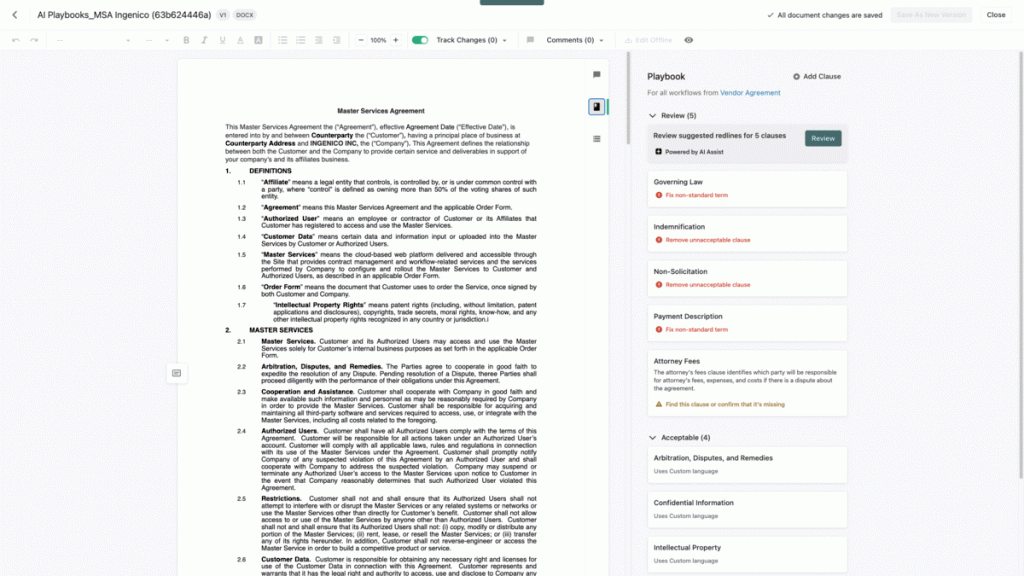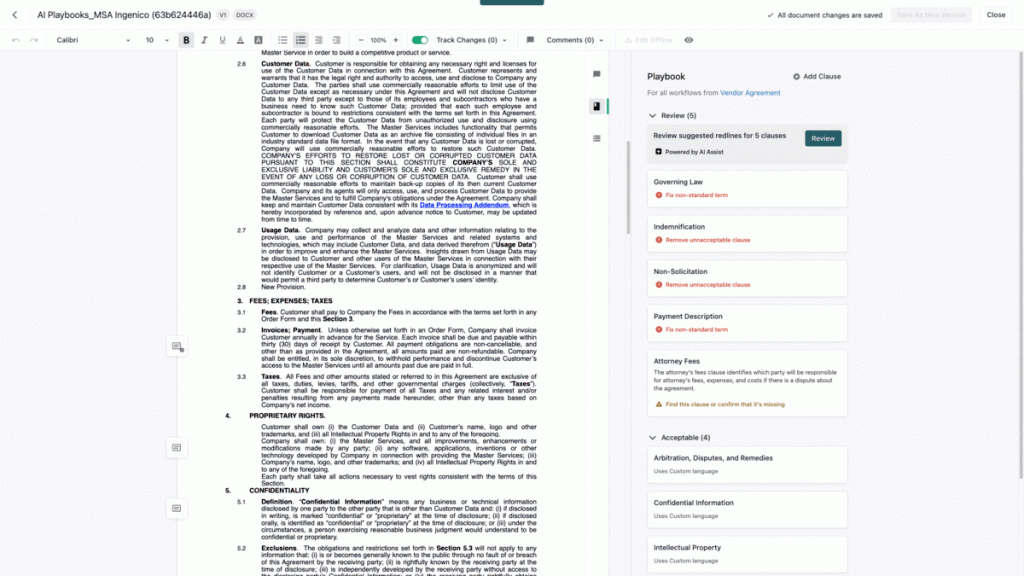As the contract lifecycle management company Ironclad is today releasing its AI redlining tool AI Assist out of beta, is has revealed that the tool is powered by OpenAI’s GPT-4, making it what Ironclad says is the first contract redlining application powered by the latest version of Open AI’s generative AI.
“The results with AI Assist have been beyond what we could even have imagined,” said Ironclad CEO and co-founder, Jason Boehmig. “An initial pass at contract redlining usually takes about 40 minutes. With AI Assist, we’re seeing users complete them in two minutes. Already, some large enterprises are using Ironclad AI to review over 50% of their incoming contracts, so the compounding business impact there is unprecedented.”
Although Ironclad says that this is the first redlining tool to use GPT-4, Casetext’s CoCounsel, which is built on GPT-4, has capabilities for checking contract policy compliance and suggesting redlines to bring contracts into compliance. It should also be noted that there are other contract redlining tools on the market that use AI, but not GPT-4. For example, just two weeks ago, I wrote about BlackBoiler’s release of Context AI, which uses AI to redline documents in conformance with a company’s playbook.
Learn more about Ironclad in the LawNext Legal Tech Directory.
Ironclad initially released AI Assist in February, using GPT-3. As I wrote then, the tool rapidly redlines contracts based on a company’s playbook of approved clauses and language. The redlines appear as tracked changes in Microsoft Word, where a user can scan the recommended changes and accept or reject them.
In addition to redlining a document, AI Assist allows users to highlight any block of text, give a prompt for editing, and generate several redline options based on the prompt.
These features can dramatically speed up the contract review process, Ironclad says, and help augment a legal team’s issue-spotting and negotiation capabilities.
A key feature of this new tool is that it allows legal teams, without the assistance of an engineer, to train Ironclad’s models based on their own contracts, use cases and business needs, Ironclad says.
“While AI is really powerful, it becomes exponentially more powerful when you can train those models yourself to be tailored to your own needs,” an Ironclad spokesperson said. “But alas, lawyers are not AI engineers.”
The spokesperson also said that Ironclad has put significant work into implementing GPT-4 responsibly, based on the belief that AI cannot and should not be making decisions for lawyers.
“It should be guiding, assisting, and doing heavy lifting — but the deep legal knowledge lawyers bring to the table is indispensable,” he said.
“Our approach with AI is to help legal teams slice through the rote work they don’t want to do, so they can focus on the interesting problems they went to law school to solve,” said Cai GoGwilt, co-founder and chief architect at Ironclad. “AI Assist clears the ‘underbrush’ and is a force multiplier for legal teams – a super-power that knows problems to look for, offers ways to solve them, and puts the decision making in the users hands.”
 Robert Ambrogi Blog
Robert Ambrogi Blog

